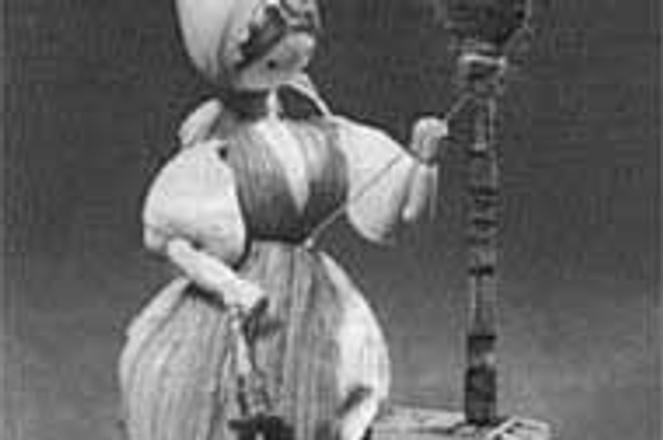Sometimes finding the right gift is difficult. This even holds true amidst the countless possibilities at the numerous Christmas markets accross the country (see left). But it there is meaning added to the gift, perhaps a story, it becomes a little easier to choose.
Cornhusk Figures
Those delicate cornhusk dolls, which come to center stage each December, posing in nativity scenes in shops and homes, remind Slovaks of the simpler lives of peasants and shepherds in times gone by. Yet the art of making the figures is not a very old one, first appearing in the middle of the 20th century, according to the Centre of Folk Art Production (ÚĽUV).
ÚĽUV credits one woman, Kamila Rauchová, as the first person to master the craft, in 1957. Today, Júlia Gabrišková, 53, is one of the standard-bearers, having made the dolls in Dunajská Streda for ten years.
First, Gabrišková said, she gathers husks from the fields, dries them and stores them in large sacks. When it comes time to work with the husks, they must be soaked in water, trimmed, and bleached with sulphur.
The wide leaves become skirts and pants for the figures, Gabrišková explained. Narrower strips make sleeves and scarves, and imperfect pieces are twisted to form arms, legs, and torsos. Each tiny part is made separately - picture tiny piles of arms, legs, and heads - joined together, and then decorated. Gabrišková's husband, Ivan, creates miniature baskets, spinning wheels, and broomsticks for the characters out of wood.
The work is hard, but satisfying. "My hands and my back really suffer," she said. "They come under great pressure. But it's my job and my hobby. When I finish the dolls I talk to them." To make sure that the art is carried on, Gabrišková trains teachers the technique so they can pass it on to youngsters. She also works with mentally disabled kids, and shows children at summer camps how to make simple figures. Basically, she explained, she wants others to know the joy that she has found in the task. "When I have a bad day," she said, "or someone has made me mad, I just go back to work and it brings me peace."
Modrá tlač
Remarkably enough, any modern example of the blue-and-white printed fabric known as modra tlač comes out of one workshop belonging to the Trnka family in Púchov. Stanislav Trnka, the only remaining master of the craft, is the last link in a chain dating back to the 18th century.
Unlike most folk art, this printing technique originated in larger towns and spread outward to artisans in rural villages. By the end of the 19th century, a large network of modra tlač workshops produced the fabric, then available in light blue, yellow-blue, green-blue, yellow, and green as well as the standard midnight blue.
The lacy white patterns are created with the use of brass wire plates. Originally, dyers used wooden molds, which produced thicker patterns; each artisan owned a number of patterns that suited the needs of his or her customers. The most popular pattern in each village often appear as a part of the local folk costume. The fabric also made bedspreads, aprons, and curtains.
With industrialization and a drop in the popularity of folk clothing, the number of workshops dwindled - by 1950 only 50 remained in production. Now, only Trnka's workshop continues the craft, continues the tradition.
Slovak crystal
Many visitors to central Europe have heard of the craftsmanship of Bohemian crystal. But very few know that the technique for making multicolored glass was discovered at a Slovak plant. The skill was found inadvertently by a Polish immigrant named Leo Pantoček in the second half of the 19th century. Pantoček was making fireworks for Johan Georg Zahn, the founder of the Zlatno glassworks in south-central Slovakia. When the fireworks were complete, he found that the glass in the room had taken on strange colors. He broke down the process and discovered a technique using copper, selenium, bismuth, and other chemicals; his invention was a great success at the world fairs in Paris and Vienna.
In fact, combined with Zahn's own innovation - glass money used to pay plant workers - the rainbow crystal took first prize at the Paris world fair. The original Zlatno plant is still in operation as part of the Sklárne Poltár glass industry around the town of Lučenec. Sklárne Poltár also runs the Katarínská Huta factory, founded in 1841, and the Poltár plant, built in 1971. All three plants make plain glass as well as lead and sodium-potassiate crystal.
"The whole region has a glass-making tradition," explained Peter Slezak, export manager for the company. "We export our products to the whole world." In fact, some of the crystal sold to tourists under the "Bohemia" label comes from Poltár. The company is a shareholder in Sklo Export, which owns the Bohemia brand. So for Poltár crystal, look for the Bohemia label with the "made in Slovakia" sticker.

